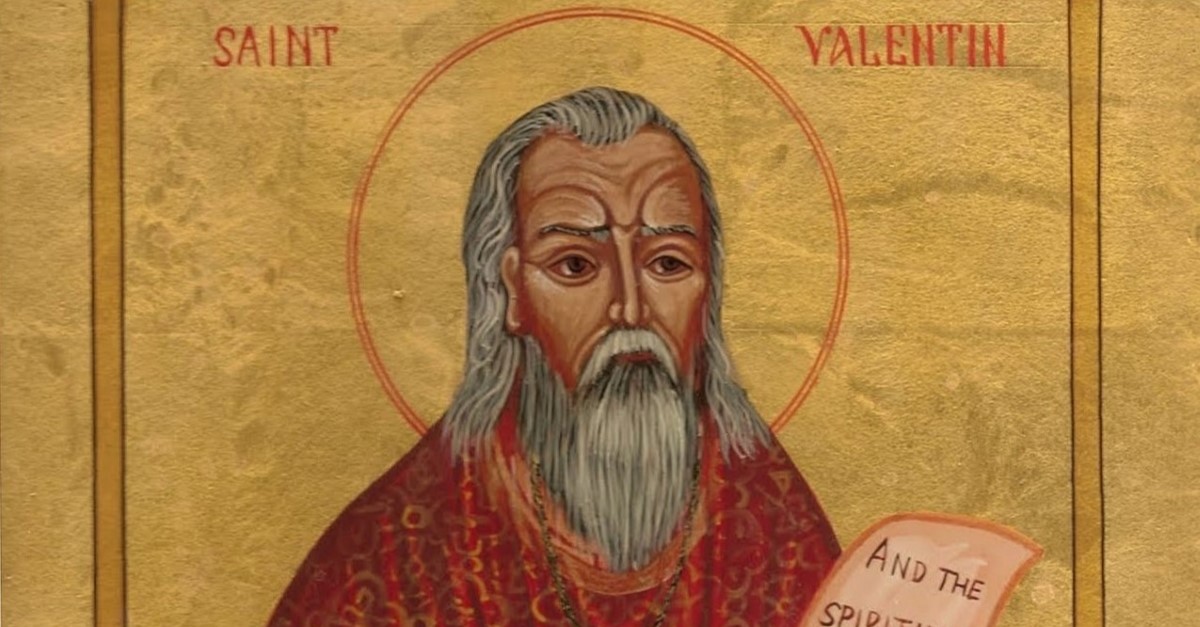How to Make Valentine’s Day about More Than Just Candy for Your Kids

Valentine’s Day is just around the corner, and with it, an abundance of candy, hearts, and little paper cards to give and receive. As jovial as this holiday can be, when it comes to teaching children, there is a beautiful opportunity to dig a little deeper and help them learn who Valentine really was. When children come to know why we celebrate this holiday, they can carry with them the inspiration of how to honor the roots and intentions of St. Valentine himself. His legacy can extend far beyond plush bears and chocolates, and we can inspire a generation by teaching them the origins of Valentine’s Day.
Who Was St. Valentine?
According to various accounts, there was not a single St. Valentine, but multiple Valentines who sacrificed themselves in service of the Lord and in helping others. The first account is that of a Valentine, a Catholic priest during the reign of Emperor Claudius II, who ruled from 268 to 270 A.D. (Brittanica, 1). As the passed-down account goes, Valentine performed marriages in secret, though it was against the law. Claudius was fixated on military service at the time and thus outlawed the performing of marriages so that men would not have the distraction of a wife and family at home. This led to his imprisonment at the home of a noble. According to History.com, he prayed for and healed his jailer’s daughter, healing her blindness through the Holy Spirit. The miracle stunned the family, and in turn, the entire household came to faith in Christ, but this also sealed the fate that Valentine was to be put to death by the government’s orders. The story continues that he signed a note to her before his death on February 14th, “Your Valentine,” as a sign of friendship. Because of the martyred sacrifice of this hero on February 14th, the day carries on as a day of friendship and little notes.
In a similar storyline, the second St. Valentine is a Bishop of Terni who performed marriages in secret and was sentenced to pay the ultimate price. He, too, was martyred on February 14th. With the two of these backstories both having matching dates, it is clear why St. Valentine’s Day lands on the anniversary of their noble sacrifices each year.

Why Should We Teach Children about This?
Both backstories combine to make Valentine’s Day an important day. They hold a tender and not necessarily storybook ending to share with children, but so much can be learned. Children and adults alike can be encouraged that love, in many forms, is a gift, and we can express love and kindness and fight for what is right no matter what day of the year.
When someone understands more of the reason behind a tradition, it is often received with deeper appreciation. Especially for children, teaching them that Valentine’s notes can be towards friends, and not just someone of romantic interest, will inspire them to offer love to one another. This can also shift the narrative towards making it a point to pray for one another, just as Valentine prayed for the jailer’s daughter.
Make it a point to highlight the power of prayer in the story, for the God who healed in the Bible is still in the business of healing today, and prayer holds magnificent power. This can be a wonderful way to teach a child that their prayers matter to God and that He highly values them. In Matthew 19:14, we are reminded of Jesus inviting the little ones to sit with him, “But Jesus said, 'Let the little children come to me and do not hinder them, for to such belongs the kingdom of heaven.'”
This gentle moment reveals His heart for the youth, and it serves as a reminder to us now that we must encourage them to come before Him. Using this holiday to convey the power of prayer will help your child see that prayer is not make-believe; it can impact those around them.
Beyond Make Believe
Although Valentine’s Day does not have a Santa Claus-like figure, it still can lean towards aspects of pretend more than what is real, beautiful, and true. Children are very malleable, and what you teach them early on typically will be something that roots itself and sticks with them throughout their lives. As Proverbs 22:6 reminds us, “Train up a child in the way he should go; even when he is old, he will not depart from it.” In this line of thinking we can strive to help children hold firm to the truths of this life over what is fantasy.
Offering historical perspectives, highlighting how God can heal and respond to prayer, and why celebrating heroes is something a child will take with him or her into their adult life. There is also something captivating about a young person looking past the commercialism of a holiday and seeing that they can change someone else’s day with an act of thoughtfulness, especially if they invite God into the situation. We have the opportunity here to ask the Lord to lead children to ask Him how to express His love towards others, not just on holidays, but every day.
Looking to Christ

There is also the chance to point back to the day of sacrificial love by Christ, who died for our sins. John 15:13 reminds us that “Greater love has no one than this, that a person will lay down his life for his friends.”
Christ did this in the highest form on the cross, and we can use the story of sacrifice for others from both St. Valentine’s as a way to point back to the Lord. In the verse in John, the word for love is the Greek word “agape,” which is often used to convey, “Agape love, often considered the highest form of love, embodies selflessness, sacrifice, and unconditional care for others. This profound concept, rooted in ancient philosophical and religious traditions, transcends mere feelings, emphasizing actions and commitment.” (Roat, 1)
We see the Lord carry out this agape form of love again and again, and on a day that celebrates love, there is no better time to remind children and adults alike what true love really is: the love of God to us.
Instead of making Valentine’s Day another day filled with sugary treats and superficial commercialilsm, invite God into the story. Ask Him to help you know how to specifically frame for your child, your friend’s children, or those around you a unique way to point the occasion back to its roots and/or ultimately point the story back to Christ Himself. You may just find that you are starting a new tradition that will be beloved and cherished for years to come. Valentine’s Day can be when we celebrate love in the highest form, the agape love of Christ.
Photo credit: ©GettyImages/Polina Lebed

Originally published January 24, 2025.







